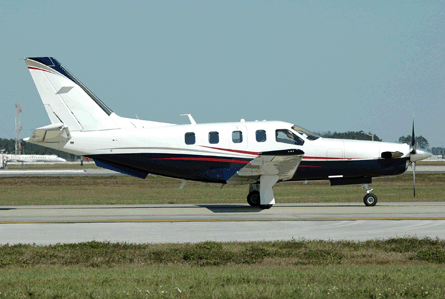The instrument rated private pilot of a Socata TBM 700 that crashed shortly after departure from Teterboro airport near New York City on the morning of 20 December was attempting to climb out of icing conditions at 17,000ft (5,185m) minutes before the aircraft spiralled into the ground, killing all five on board.
Investigators revealed that the outboard section of the right wing and "several sections of the empennage" were found 0.25nm (0.46km) southwest of where the fuselage came to rest, leading to speculation the pilot may have over-stressed the airframe during an attempted recovery from an ice-induced stall.
A US National Transportation Safety Board (NTSB) investigator speaking to reporters several days after the accident confirmed that a common theme in reports from witnesses was that the aircraft "spiralled" into the ground.
 |
|---|
© Goose Gallery on AirSpace A Socata TBM 700 like the one above crashed shortly after departure from Teterboro airport near New York City |
New York centre air traffic controllers had been advising airline pilots of "moderate" rime icing between 13,000ft and 18,000ft that morning when N731CA, en route from Teterboro to Atlanta, climbed through 10,000ft toward his planned cruising altitude of 26,000ft.
Before entering the clouds at 15,000ft, the pilot was told by controllers of reports of "moderate icing" between 15,000ft and 17,000ft.
"We'll let you know what happens when we get in there," the pilot told the controller. "And, ah, we can go straight through it. No problem for us."
According to the NTSB preliminary report, the 1,400h pilot reported being in icing conditions at 17,000ft and was given clearance to climb to 20,000ft. "The aircraft reached a maximum altitude of 17,900ft feet and then began to descend," the report states.
NTSB confirmed that the Pratt & Whitney Canada PT6A-powered TBM 700, manufactured in 2005, was equipped with a deicing system, including pneumatic boots on the wings and empennage leading edges, and that parts of the system survived the crash and will be analysed.
Source: Flight International























